La Sima de las Palomas del Cabezo Gordo (Torre Pacheco, Murcia)

A mass of marble in the middle of a plain
Cabezo Gordo is a hill of Triassic marble rising abruptly in the coastal plain 6 kilometres from the Mar Menor seawater lagoon, reaching 310 metres above sea level. Some 75 metres above sea level on the rocky, treeless southern slope of the hill lies the natural karstic shaft of Sima de las Palomas (“Dove Hole”). During the Upper Pleistocene this shaft became filled up with a sedimentary fill of fossilised soil and rocks, forming a conglomerate called “breccia” which is rich in fossils and Palaeolithic artifacts. This fill was largely emptied by iron-miners a hundred years ago, who were perhaps hoping to find one of the many seams rich in magnetite that occur on the hillside, or maybe they were simply looking for better access to water that likely seeped out of the hillside below the shaft and which was probably then present in another shaft, deep within the cave. Sima de las Palomas has two upper entrances that give vertical access to the main chamber, and there is an artificial lower entrance to it made by the miners, namely, a 20 metre-long horizontal tunnel that was blasted through the hillside with the help of explosives. It provides us with easy access to the main chamber. All mining on the hillside had ceased by about 1917.
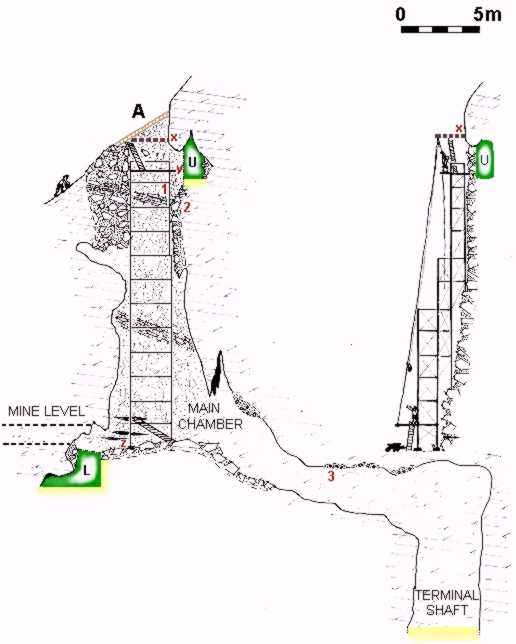
A decade of finds and hard work
In 1991 a local conservationist was abseiling on a rope down the shaft when he found the human fossil now known as CG-1 which comprises the fused upper and lower jaws of a Neanderthal hominid, in the 20-metre-deep column of conglomerate sediment (“breccia”) that forms the rear wall of the shaft.
Excavation started in 1992 and 1993 with our emptying out the mine rubble that had filled up the access tunnel, which leads into the main chamber from outside. The next step was the levelling of the main chamber floor so that a scaffolding tower, 20 metres high, could be erected. This enabled us to reach the uppermost part of the “breccia” column against the rear wall of the shaft. In the summer of 1994 the scaffolding was carried up to the site, piece by piece, and erected inside the cave, allowing us to begin systematic excavation of the “breccia” from above downwards.

Excavation has concentrated especially on the upper part of the “breccia”, dating from 35,000-60,000 years ago, according to dates obtained at Oxford University by radiocarbon and optical sediment luminescence. This “upper cutting· has provided a hundred bones and teeth belonging to Neanderthal folk, as well their characteristic Mousterian Middle Palaeolithic stone tool industry and associated early Upper Pleistocene fauna. From the base of the “breccia” column come geophysical dates that suggest it goes back to the last interglacial period 120,000-130,000 years ago. It is possible that some of the sixty-odd human fossils we have found in rubble left behind by miners might just come from such deep levels and some show traits that recall the fore-runners or “pre”-Neanderthals called Homo heidelbergensis. Altogether the site has provided about 150 human remains between our “upper cutting” excavation and finds made in the mine rubble both within the cave and also strewn on the hillside around the entrance to the tunnel, all of which we have sieved. Although all the remains from their spoil heaps and from mine rubble inside the cave are out of their archaeological context, the palaeoanthropological, palaeontological and palaeolithic finds are nevertheless of great interest because we are completely certain that they come from the inside of the shaft and main chamber.
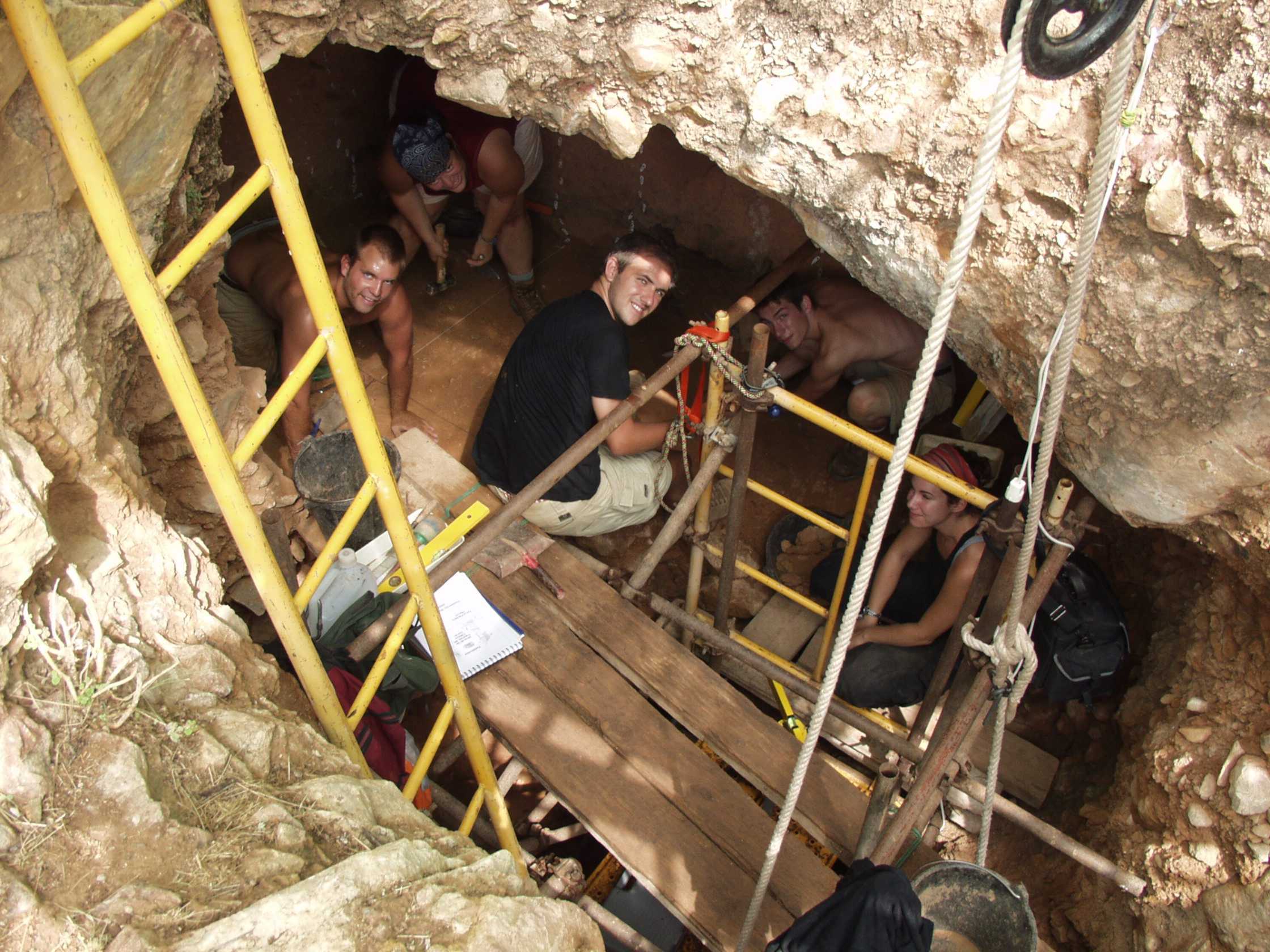
This site is offering us a large number of hominid remains. Since the first cranial fragment was found in 1991, many other fragments have come to light. Human mandible fragments indicate presence of at least 8 or 9 individuals, from infants to adults. We have found several human skull fragments and teeth. There are also several postcranial bones, such as finger bones from hands and feet, vertebrae, and fragments of humerus, ulna, and various other parts of the human skeleton. Altogether about a 150 hominid fragments have been identified which belong to 8 or 9 different individuals. In 2005 and 2006 we have excavated skeletal parts in anatomical articulation, including a leg and foot, and an elbow, and other bones heavily cemented in concretions of breccia which require a long time to clean in the lab. Maybe Neanderthals were sleeping beside a fireplace (which we have also excavated) when part of the roof collapsed and buried them alive.
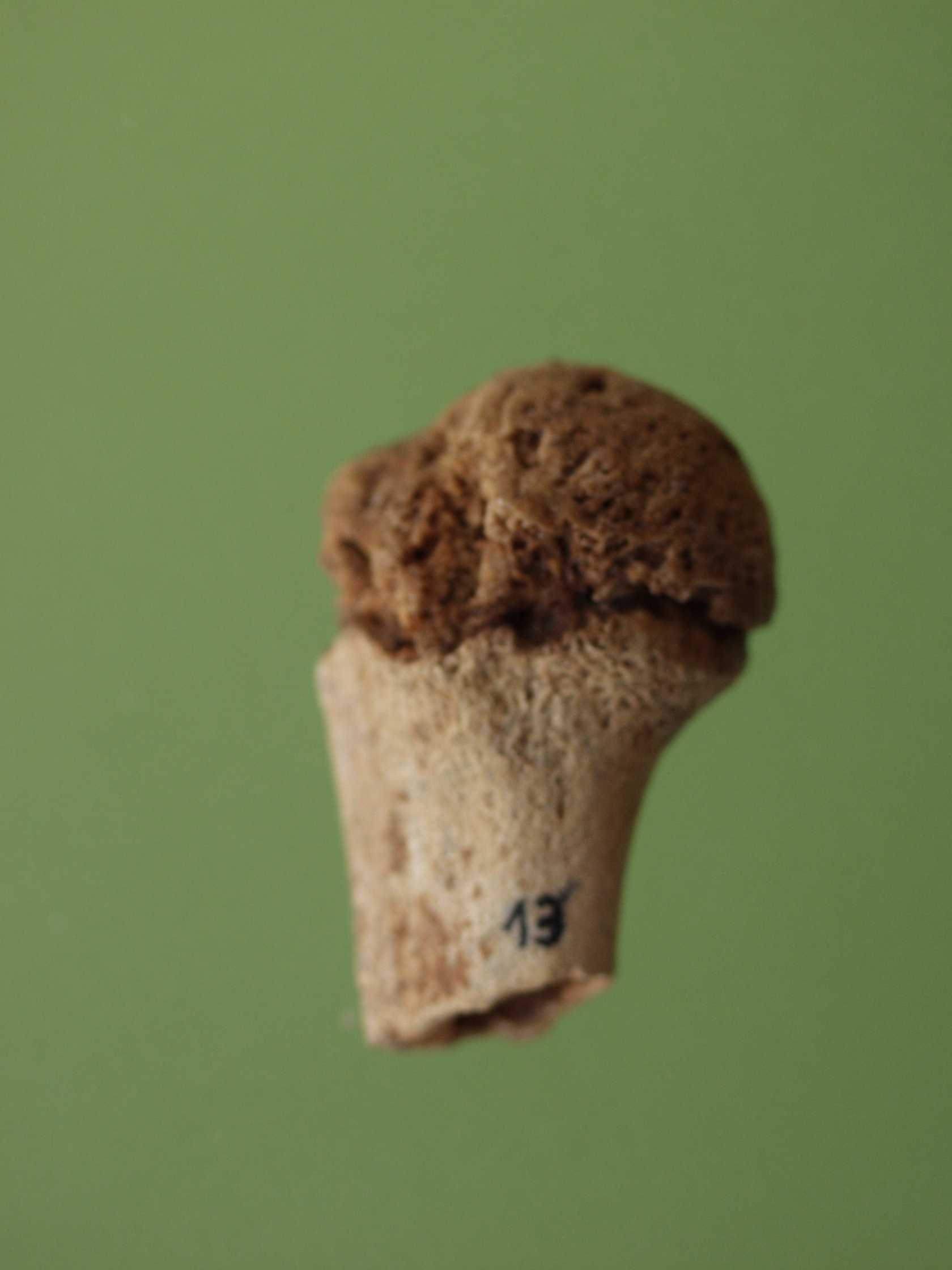



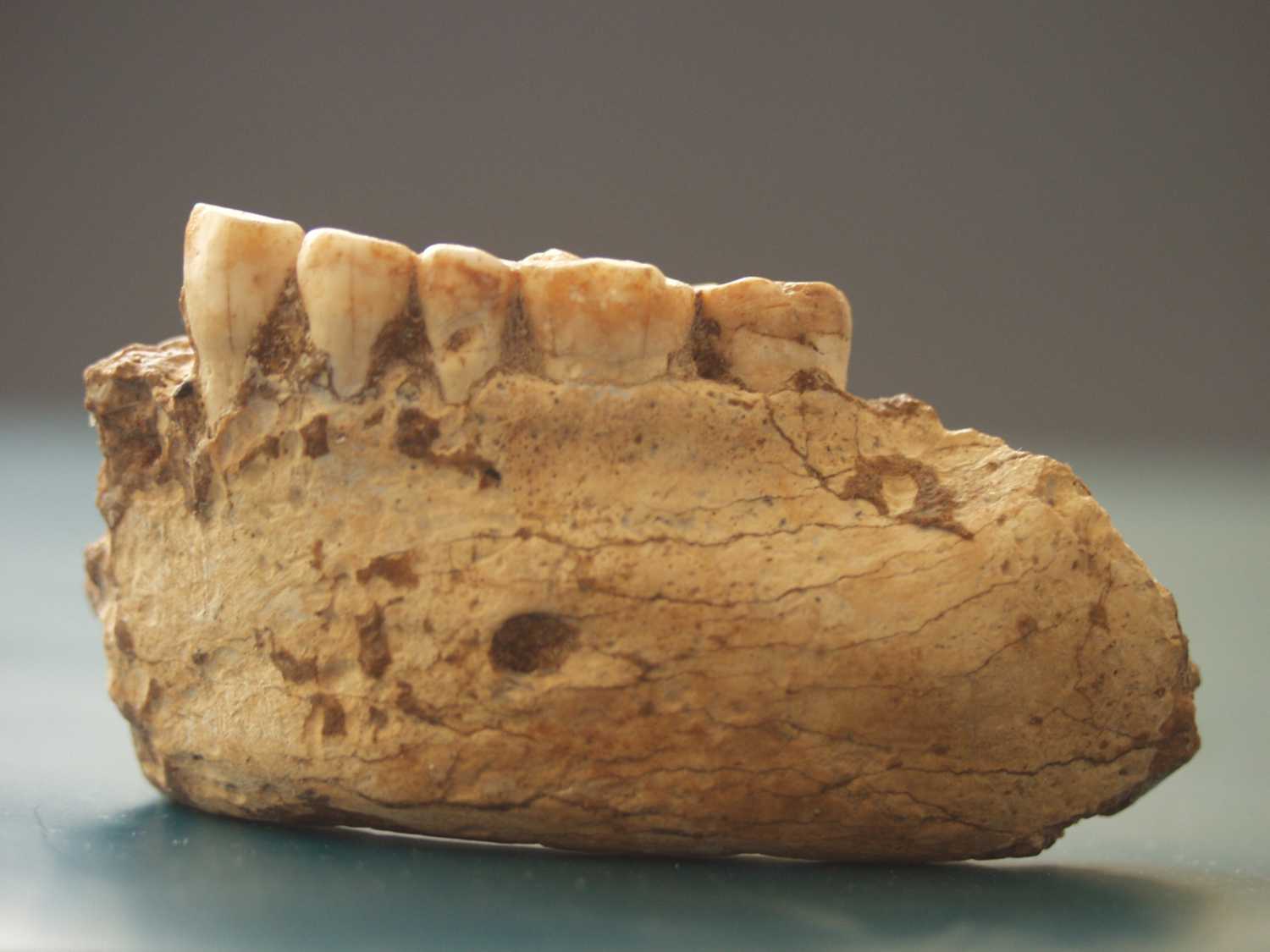

The fauna includes panther or lion, hyaena, hippopotamus, elephant, rhinoceros, deer, wild horse, aurochs, ibex, rabbit, hare, and tortoise, though there are only a dozen bird species. Pollen analysis from the “upper cutting” indicates mild and moist conditions, perhaps an interstadial during the last ice age.
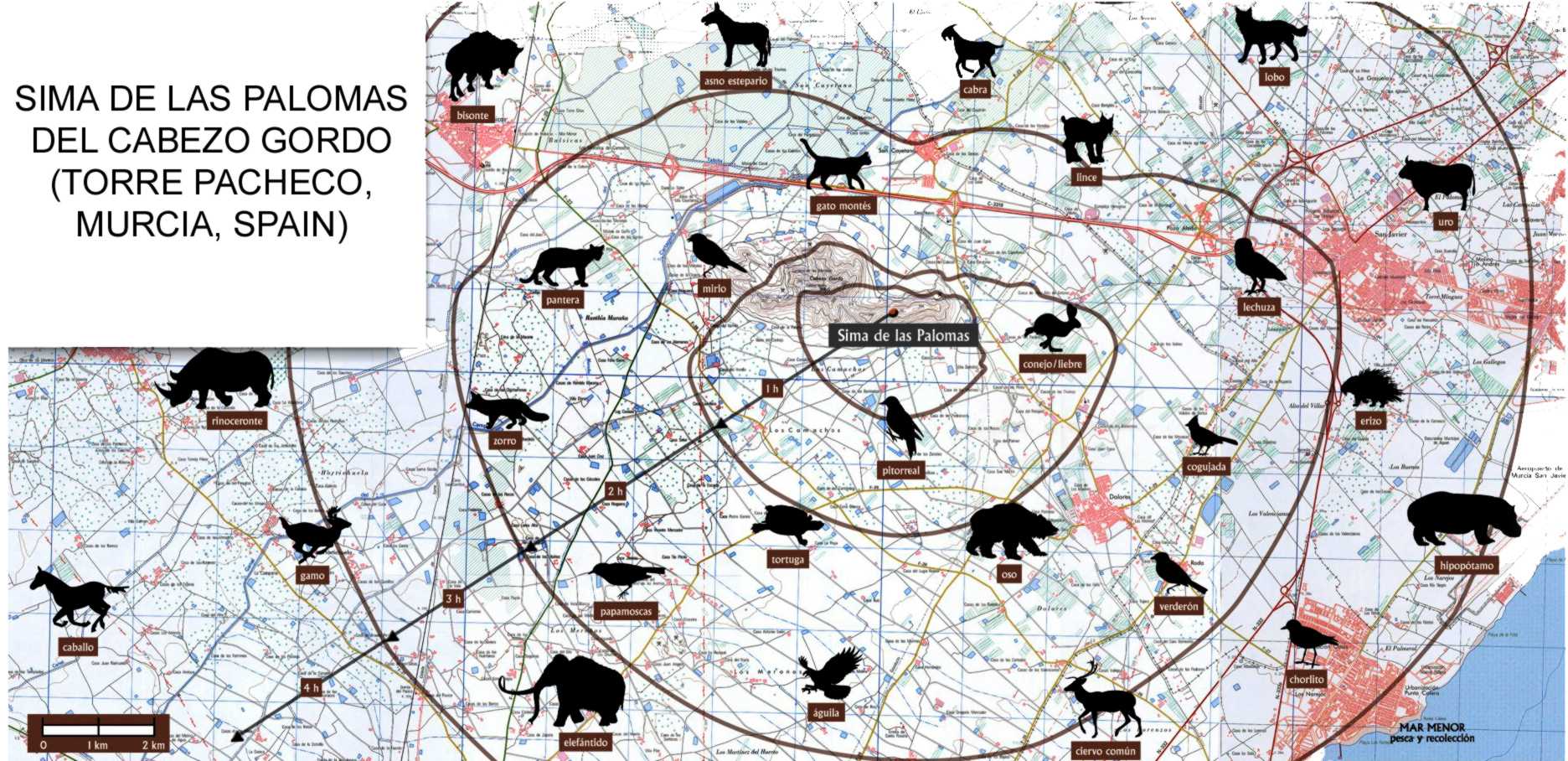
The stone tools found at the Sima de las Palomas are Mousterian. Many flint tools are very well made. Some tools are made of marble, limestone, quartzite, quartz and even transparent rock crystal. As well as scrapers and denticulate forms, there are also flat triangular projectile points, thick or stubby points, and awls or borers, hammerstones, and abundant unretouched struck flakes. The flint source is not known and no outcrop of flint has been found on the Cabezo Gordo hill even though it has been exhaustively searched, but naturally-occurring marble, calcite, quartzite and quartz, including rock crystal, are present on the hill. on the hillside.
